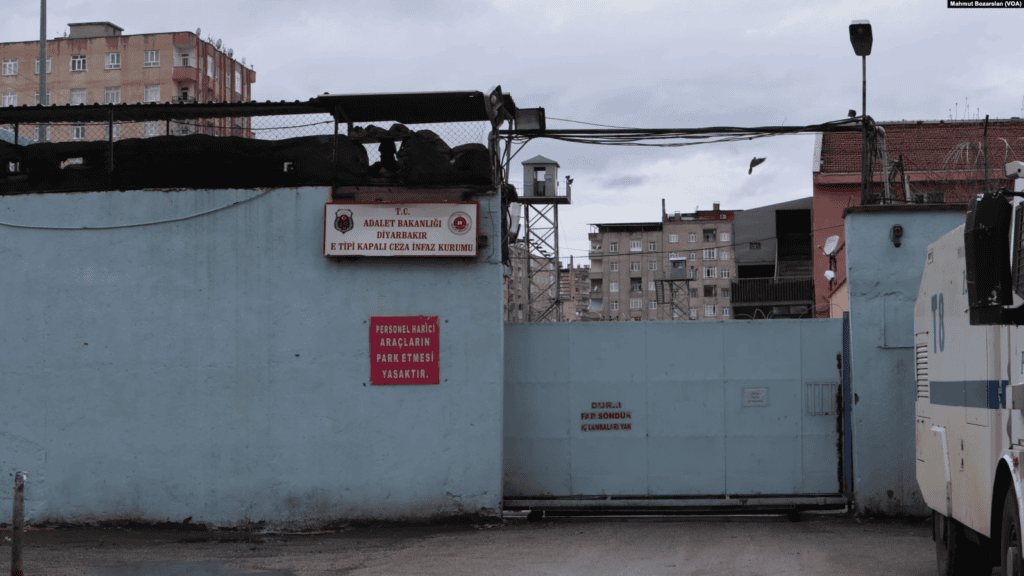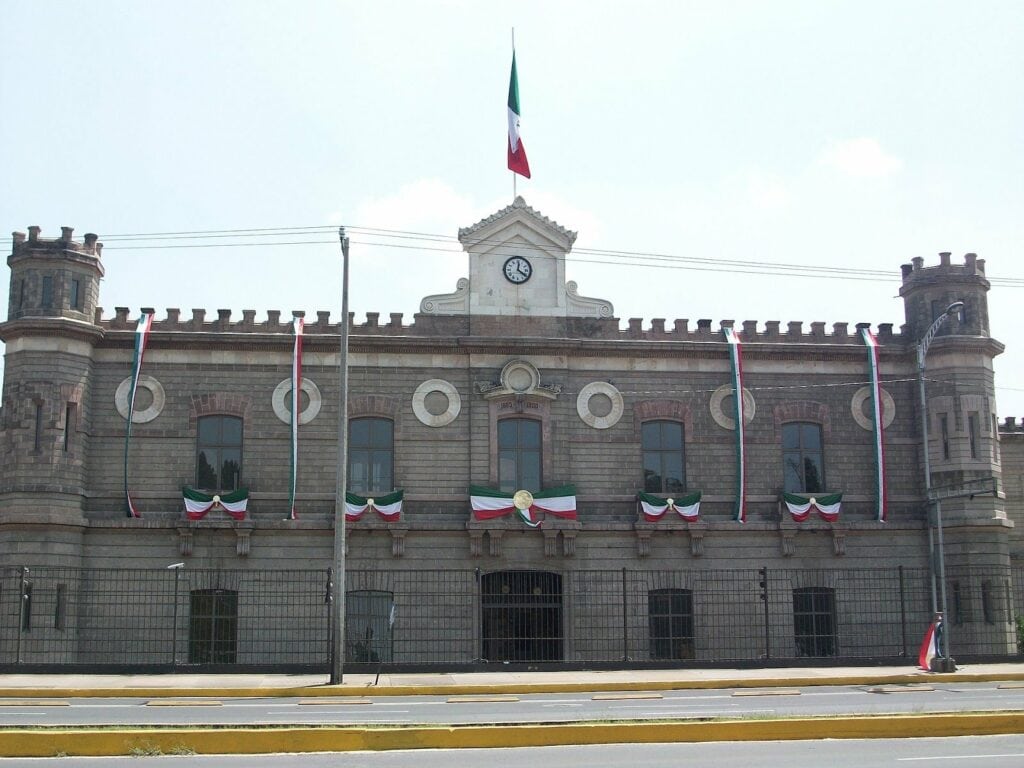The idea of prisons is a scary thought for most of us! Prisons are dangerous and often contain some of the most notorious humans on earth. Some such prisons have been around for centuries. The prison system that we use around the world is the “Pennsylvania System” of solitary confinement. It was introduced by the Eastern State Penitentiary in 1829.
Prisons have evolved a lot from being an institution of punishment. Today, prisoners are encouraged to take responsibility and reintegrate. Here are the 8 oldest prisons in the world that laid down the prison system that we follow today.
8. Diyarbakır Prison (Turkey)
Built: 1980
Location: Diyarbakır, Turkey
Still in use?: Yes, as an operational prison

Diyarbakır Prison is located in Diyarbakır, southeastern Turkey. It has a dark history of human rights abuses. The Ministry of Justice established it in 1980 as an E-type prison after the Turkish military coup.
The prison was known as the “Hell of Diyarbakır” during 1981-1984. This is due to the widespread torture and abuse of prisoners. Prisoners were put through severe beatings, sleep/sensory deprivation, sexual humiliation, and other horrific forms of torture. Over 100 prisoners are reported to have died due to the torture and poor conditions during this period.
The prison became a symbol of state oppression against the Kurdish population and political dissidents in Turkey. Some prisoners were Kurdish politicians, writers, and activists such as Ahmet Türk, Orhan Miroğlu, and Mehdi Zana.
Investigations into the abuses at Diyarbakır Prison have been poorly handled, with security forces often relieved of responsibility. The European Court of Human Rights has ruled that the force used by security forces at Diyarbakır Prison violated the right to life.
Kurdish activists tried to turn the prison into a “Museum of Shame.” Diyarbakır Prison still remains operational, holding both political prisoners and common criminals.
Did You Know?
In 1996, 10 inmates died, and 46 others were injured during a violent crackdown by security forces at the Diyarbakır prison.
7. Qincheng Prison (China)
Built: 1958
Location: Beijing, China
Still in use?: Yes, as a high-security political prison

Qincheng Prison is a maximum-security prison located near Beijing, China. The prison was established in 1958 with Soviet aid. Qincheng Prison has been under the administration of China’s Ministry of Public Security since its establishment.
It was originally built to hold only Kuomintang (Nationalist) political prisoners but later held many other political detainees. High-ranking Communist officials, dissidents from the Tiananmen Square protests, and Tibetan figures were all held here.
The prison is divided into three main sections – jail houses, a management/work area, and residential housing for staff. Cells have high walls and limited windows. There are strict rules about exercise, sleep, and interactions between prisoners.
Prisoners are assigned numbers rather than using their own names, and staff are also prohibited from using personal names. Qincheng Prison is known to provide better living conditions and amenities for high-ranking political prisoners.
Did You Know?
Under Mao, prisoners were put to work rather than executed, with light manual labor like making hats and boxes.
6. Palacio de Lecumberri (Mexico)
Built: 1900
Location: Mexico City, Mexico
Still in use?: No, it is now the General National Archive

The Palacio de Lecumberri is located in Mexico City. It operated as a penitentiary from 1900 to 1976. The Palacio de Lecumberri is known in popular culture as the “Black Palace of Lecumberri.” The living conditions at the prison were very dangerous, with reported torture by guards. The majority of early prisoners were political threats to the Porfirio Díaz administration.
The prison was designed based on Jeremy Bentham’s Panopticon model. This model lets a single guard observe all prisoners. It was built to hold 800 men, 180 women, and 400 children, with 804 cells, workshops, and other facilities.
In 1976, the prison was decommissioned, and the building was turned over to Mexico’s National Archive in 1980. The National Archive is inside the former prison now. It has millions of pages of Mexico’s documentary heritage, including secret police files from the “Dirty War” period.
Did You Know?
Many muralists, writers, and revolutionaries like David Alfaro Siqueiros and Trotsky’s assassin Ramón Mercader were imprisoned here. Only two prisoners are known to have escaped from the Palacio de Lecumberri – Pancho Villa in 1912 and an American named Dwight Worker in 1975.
5. Pentonville Prison (United Kingdom)
Built: 1842
Location: London, England
Still in use?: Yes, as an operational prison

Pentonville Prison in London was constructed in 1842. It is located in Barnsbury, north London, not in the district of Pentonville. Pentonville Prison was designed on the “separate system” of solitary confinement after Eastern State Penitentiary.
The prison has also served as the site of numerous executions, with 120 men being hanged there between 1902 and 1961. The prison became overcrowded and had poor conditions that led to security breaches.
Pentonville Prison is described as “the most dramatic example of failure” in the prison system. Even today, the prison struggles with drug smuggling, violence, and staff shortages. They had prisoners temporarily transferred to manipulate population figures. Pentonville Prison is seen as a “soft target” due to the run-down state of the Victorian buildings.
Despite all that, the prison remains operational to this day.
Did You Know?
Pentonville Prison held famous prisoners like Oscar Wilde, George Best, and Pete Doherty. It also housed and executed Irish republican activists like Roger Casement.
4. Eastern State Penitentiary (United States)
Built: 1829
Location: Philadelphia, Pennsylvania, USA
Still in use?: No, it is now a museum and historic site

The Eastern State Penitentiary is considered the world’s first true penitentiary. It was opened in 1829 in Philadelphia. Eastern State Penitentiary initiated the “Pennsylvania System” of solitary confinement and reform. This prison held notorious inmates like Al Capone and Willie Sutton.
The Eastern State Penitentiary was one of the largest and most expensive public buildings in early America. The prison’s radial floor plan, with individual cells arranged around a central surveillance hub, became a model for over 300 prisons worldwide. The original cells of the prison had running water, toilets, and central heating.
The prisoners were kept hooded to prevent communication. However, they were allowed to garden and keep pets. Due to overcrowding, the solitary confinement was abandoned in 1913. It was briefly used to house inmates after the Holmesburg riot. The Eastern State Penitentiary was closed in 1971.
Did You Know?
In 1965, the Eastern State Penitentiary was designated as a National Historic Landmark and now a museum. Every year, they host a haunted house attraction called “Terror Behind the Walls.”
3. Château d’If (France)
Built: 1524-1531
Location: Marseille, France
Still in use?: No, it is now a tourist attraction

Château d’If is located on the Île d’If, a small island off the coast of Marseille. Château d’If was built on the orders of King Francis I in 1524-1531 to defend the French coastline from sea-based attacks. Its isolated location and dangerous offshore currents made it the best escape-proof prison, similar to Alcatraz.
Over 3,500 Huguenots (French Protestants) and leaders of the Paris Commune were imprisoned at the Château d’If, along with revolutionaries like Gaston Crémieux. Prisoners were treated differently based on their wealth and status, with the poorest held in harsh, windowless dungeons.
The Château d’If was demilitarized and opened to the public as a tourist attraction in 1890.
Did You Know?
Château d’If is best known as the setting for Alexandre Dumas’ classic novel, The Count of Monte Cristo. In the novel, the protagonist, Edmond Dantès, escapes from the Château d’If after 14 years of unjust imprisonment.
2. Mehrangarh Fort (India)
Built: 1459
Location: Jodhpur, Rajasthan, India
Still in use?: Yes, as a museum and tourist attraction

Mehrangarh Fort is located in the desert city of Jodhpur, Rajasthan. It was constructed in the 15th century by the Rathore ruler Rao Jodha. The huge walls and towers of the fort were designed to overcome artillery. This made it an effective and escape-proof prison.
Mehrangarh Fort held a lot of political prisoners. Many participants in the Indian independence movement and the Tiananmen Square protests in China were held here. The prisoners at Mehrangarh Fort were often held in harsh isolation and conditions.
The fort remained an active prison until it was decommissioned and opened as a museum and tourist attraction.
Did You Know?
The fort’s prison population included both male and female inmates, though female prisoners were typically kept separately.
1. Tower of London (United Kingdom)
Built: 1066
Location: London, England
Still in use?: Yes, as a tourist attraction and historic site

The Tower of London was built almost 1000 years ago. It was originally built as a royal residence and fortress by William the Conqueror in 1066. The Tower of London was used as a prison from 1100 till 1952. Ranulf Flambard was the first recorded prisoner held there. The prison held common criminals to high-profile political prisoners.
Princes in the Tower, Anne Boleyn, Sir Walter Raleigh, and Elizabeth I were all prisoners held at the tower. The Tower clearly had a fearsome reputation. But, only 7 people were executed within the Tower’s walls, and most executions took place on nearby Tower Hill.
Since it was initially a royal castle, it mostly held high-status individuals rather than common criminals. Hence, conditions at the Tower were often better than other prisons in London.
The last prisoners at the Tower of London were Kray twins in 1952. Today, the Tower of London is a popular tourist attraction in the UK.
Did You Know?
Over the centuries, the Tower of London has been used in many ways, from a royal treasury to a menagerie housing exotic animals.
Conclusion
These 8 oldest prisons in the world are spread across the world. The concept of prison spread globally with colonial expansion. The concept of prison as a place of punishment was put forward by reformers like Jeremy Bentham and John Howard towards the end of the 18th century.
From being mere torture chambers, prisons have become more humane with the interference of stronger human rights laws globally. However, prisons today are facing challenges around order, discipline, oversight, and balancing punishment, deterrence, and rehabilitation.
It is a constantly evolving system with a basic concept of keeping the citizens of the world safe.






